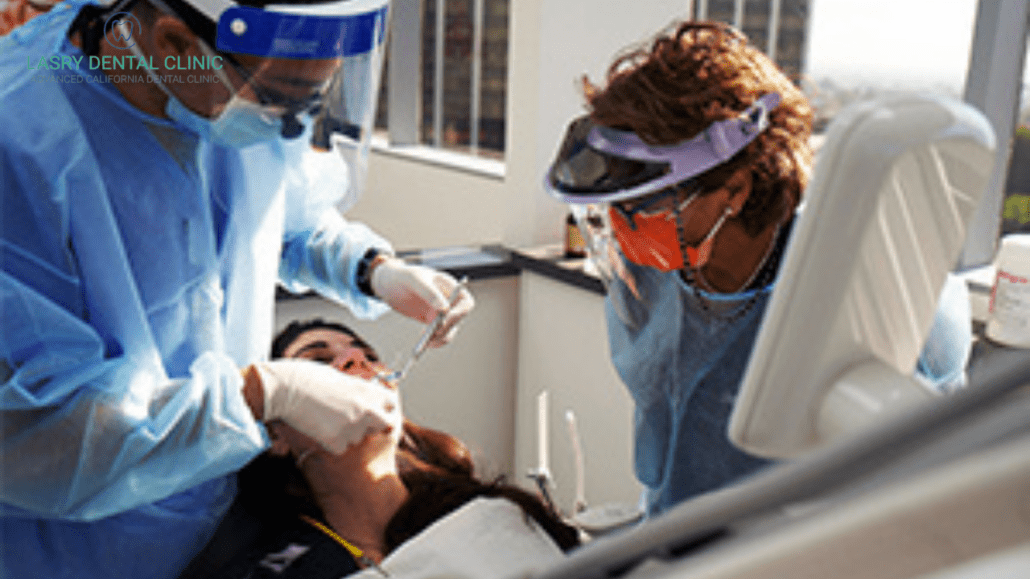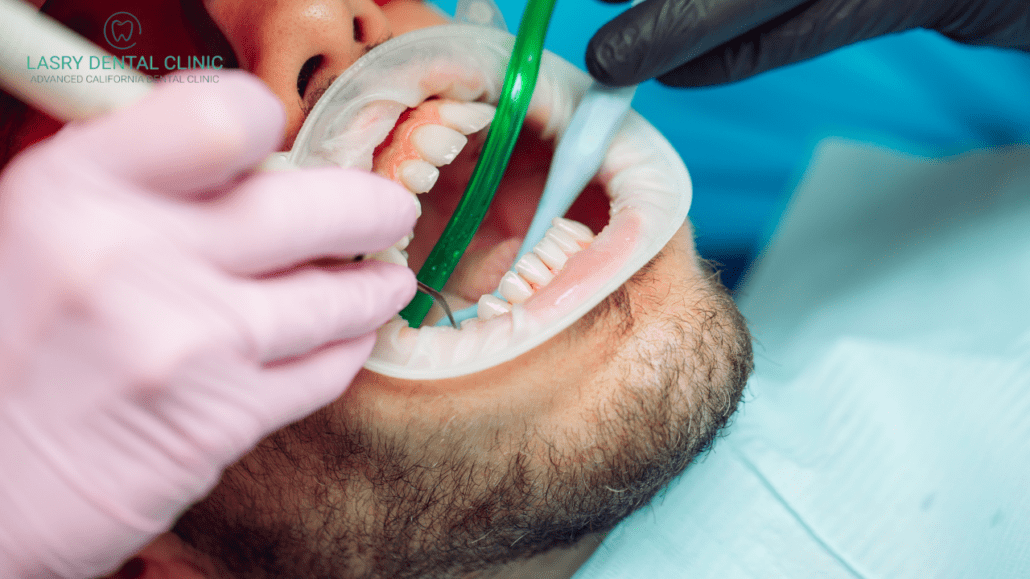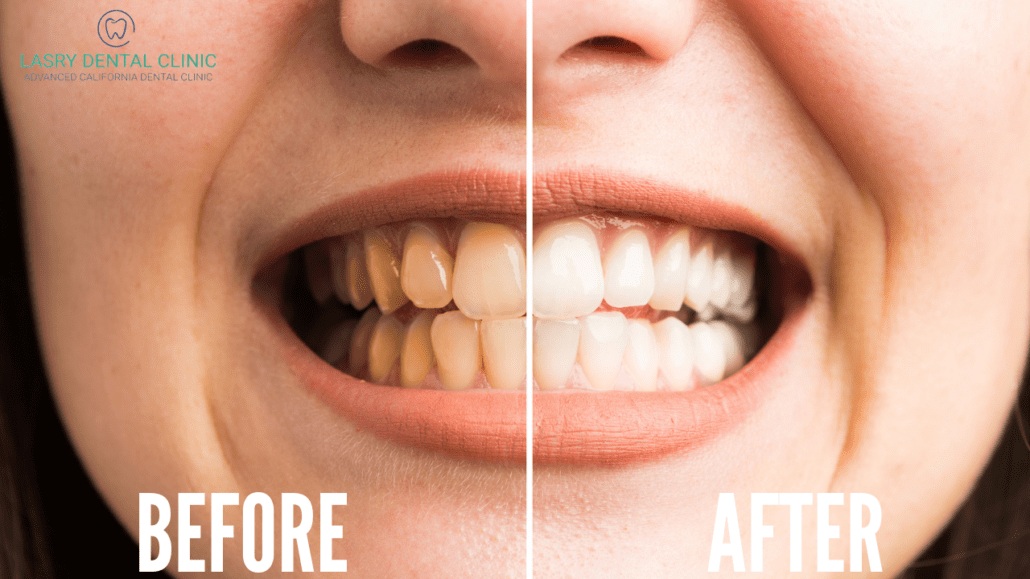How Much Does A Teeth Cleaning Cost?
How much does teeth cleaning cost? Recent studies provoke an even more critical question:
How much does avoiding a professional teeth cleaning cost?
Scientific research shows a link between gum inflammation and several serious medical conditions such as:
- Heart disease
- Diabetes
- Rheumatoid arthritis
- Stroke
- Esophageal cancer
- Pancreatic cancer
- Pregnancy complications
- Dementia and Alzheimer’s disease
Regular professional teeth cleanings can help you prevent gum inflammation and maintain better oral and overall general health.
RELATED: TEETH WHITENING IN LOS ANGELES
Teeth Cleaning Procedure
A tooth cleaning at the dentist is an essential part of preventive dental care. You might feel apprehensive about going to the dentsit because you’re not quite sure what to expect during a dental hygiene appointment. Learning more about these specific procedures and steps can help you relax and have an enjoyable experience.
1. The Greeting
Your appointment begins with a brief, but important, discussion during which you answer questions about any recent changes in your medical health or prescriptions. These changes can affect your dental treatment, and possibly your teeth cleaning. During this time, you can describe any new problems in and around your mouth.
2. The Physical Examination
Before the cleaning begins, your dental hygienist inspects your mouth. They’ll use a small dental mirror to look for any significant problems such as gum inflammation and cavities. Your dental hygienist might ask if you have any questions or concerns before beginning the cleaning.
3. Dental X-Rays
Your dentist decides how often and which dental x-rays you’ll need. This is so they can get a comprehensive examination of all your teeth and jaws. Many offices take digital x-rays, which require much less time, use less radiation, and allow you to see them on a computer screen.
X-Rays reveal conditions such as:
- Tooth cavities
- Periodontal (gum) disease
- Loss of bone
- Tooth resorption
- Cysts and tumors of the jaw
- Dental abscesses
4. Plaque and Tartar Removal
Plaque is a soft, sticky material film that forms on your teeth when oral bacteria combine with food particles (especially starchy foods).
You can remove dental plaque with brushing and flossing. But if it remains on your teeth, plaque can cause cavities, gingivitis, and even tooth loss. Brushing and flossing will not remove all tartar which is why you need a professional cleaning twice a year.
It’s easy to miss certain areas of your mouth when brushing and flossing. Your hygienist uses various instruments such as manual and ultrasonic scalers to remove plaque and tartar. It is normal to hear scraping and other noises during the scaling process.
5. Teeth Polishing
After removing the plaque and tartar, the dental hygienist works to remove stains. Then, they’ll polish your teeth with a special brush and paste. This powerful electric toothbrush and gritty toothpaste leaves your teeth feeling smooth and looking white and shiny.
6. Professional Flossing
Your hygienist can easily floss those areas you find hard to reach. This helps prevent gingivitis and removes any leftover polishing paste.
7. Fluoride Treatment
Your dentist may also recommend a fluoride treatment to protect your teeth from cavities in between your regular dental checkups.
RELATED: HOW TO BRUSH YOUR TEETH PROPERLY
Deep Teeth Cleaning Procedure
Once you’re at the dentist, you may find that what you really need is a deep cleaning procedure.
This procedure differs from a routine dental cleaning that removes plaque and tartar from around the gumline. A deep cleaning removes plaque and tartar in pockets of space between the teeth and gum. These hard-to-reach areas extend below the gum and along the root surface. Deep cleanings are meant to treat mild to moderate gum inflammation.
The Advantages of Deep Cleaning
- Helps prevent gum disease from worsening
- Fewer cavities on root surfaces
- Helps eliminate gum infections
- Freshens your breath
- Improves overall oral health
The Disadvantages of Deep Cleaning
- Can cause temperature sensitivity with some teeth
- May damage the root surfaces of teeth
- Usually requires multiple visits
- Can cause gum recession
- Needed more frequently than routine cleanings
RELATED: HOW TO FIND A GOOD DENTIST – 4 SIGNS YOU FOUND “THE ONE”
How Much Does a Teeth Cleaning Cost?
The cost for a teeth cleaning varies according to the procedures you need, the training and experience of the dental professional, and your geographic location. If you have dental insurance, your plan may cover the entire cost for one cleaning each year.
The longer you wait between visits, the more the price is likely to go up. The reason for this is because your visit will take longer and require more procedures to thoroughly clean your teeth and eliminate gum inflammation. Regular cleanings keep your cost down and help prevent expensive gum treatment in the future.
How Much Does a Deep Teeth Cleaning Cost Without Insurance?
When you inquire about the cost of a professional cleaning, you need to ask two different questions:
- How much does a routine teeth cleaning cost?
- How much does a deep cleaning cost without insurance? The difference in these two costs can reach several hundred dollars.
Most dental insurance plans favor prevention over treatment. Therefore, it is cost-effective to have regular cleanings and checkups to avoid the more costly deep cleaning. If you do not have dental insurance and need several deep cleanings each year to prevent periodontal disease or tooth loss, it can get rather expensive!
The average cost of a deep cleaning ranges between $150 and $350. However, this can rise significantly depending on your gum disease’s progression.
RELATED: FOODS THAT ARE GOOD FOR YOUR TEETH
Teeth Cleaning Before and After: What To Expect
Your home oral hygiene routine determines how your teeth feel before your cleaning. The best way to prevent plaque accumulation between your cleaning appointments is to brush twice daily and floss at least once each day.
No matter how clean you keep your teeth and gums, you will notice a considerable difference after a professional cleaning. Your teeth will look and feel smoother with the plaque removed and freshly polished enamel. Plus, your mouth and breath will feel fresher!
Depending on how deeply your teeth needed cleaning, you may experience gum tenderness and bleeding for a few days. Warm salt water rinses can make your gums feel better and resolve the inflammation quicker.
RELATED: WHAT TO DO ABOUT CHIPPED TEETH








Amazing blog, I’m very happy to read this blog. Basically, I know new many things to read this blog. I strongly believe that the blog delivers the best information to its audience.
Thank you for helping me to understand how much teeth cleaning can cost. I think it might be time for me to get my teeth cleaned. I am going to have to start looking for a reliable dentist.
It’s very helpful to know that deep cleanings help prevent gum disease from getting worse and eliminates gum infections. Not long ago, my sister told me that her gums are extra sensitive and have bled from time to time, so I believe she needs to read your insight right away. I appreciate your intake on teeth deep cleanings and their main advantages.